Color can significantly impact your sales, either increasing or decreasing them.
Yes, you're reading that correctly: a color is such a powerful and crucial element for any brand and its marketing efforts. Furthermore, colors not only benefit your business; they also carry their own emotional value, which companies exploit for their branding and marketing strategies.

Let's delve into a detailed blog for better understanding!
In this blog, we will explore the profound influence of colors on various aspects of your business and unveil the science behind color psychology in branding and marketing strategies. But first, let's consider some compelling statistics:
- Colors can boost brand awareness and recognition by as much as 80%.
- Additionally, colors alone can influence up to 90% of an initial impression.
- Color affects 85% of consumers' choices when making purchases.
- Color affects behavior, mood, and stress levels.
With these statistics in mind, let's delve into the psychology of colors.
What is Color Psychology?
It is an important area of color theory that explores how different colors can affect our emotions and thoughts. It looks at the connections between colors and the feelings they evoke in people. This color physiology varies according to the person and the culture followed by them.

Understanding Color Psychology in Branding & Marketing
Have you ever wondered why certain brands like Apple, Microsoft, Coca-Cola, Disney, etc. use specific colors in their logos or advertisements? It's because colors have a powerful effect on how we feel and act.
Understanding color physiology in marketing helps us decode the science behind why we're drawn to certain products or messages.
For instance, did you know that blue often conveys trust and security, while red can create a sense of urgency?
Shades Unveiled: Color Interpretations.
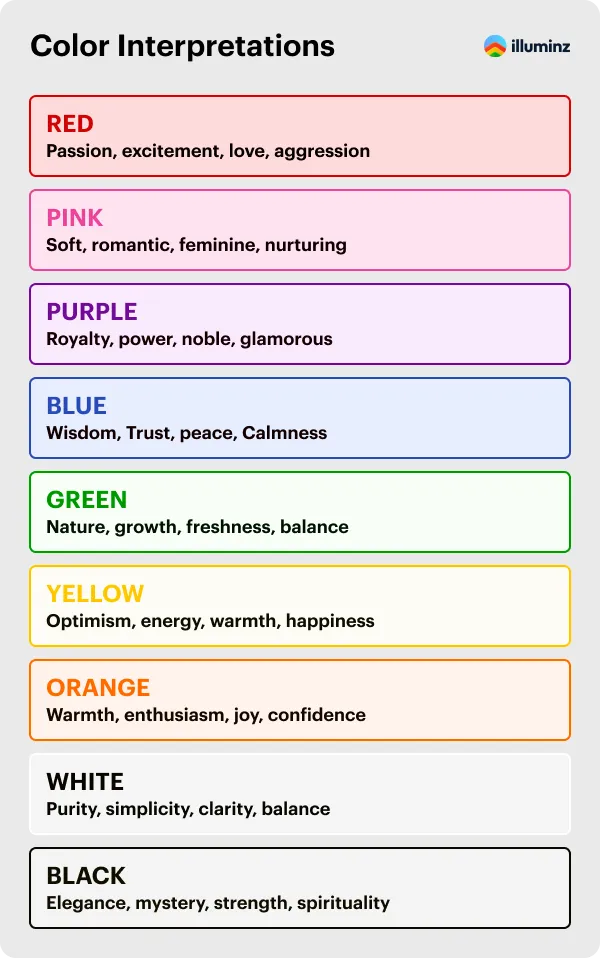
By tapping into these insights, marketers can strategically choose colors to evoke the right emotions and make a lasting impression on their audience. It's fascinating how something as simple as color can play such a big role in shaping our perceptions and decisions!
Boost Your Brand with Expert Color Strategies!
Unlock the potential of color psychology in your branding and marketing. Let our design experts help you make a lasting impression.
Why does Nintendo opt for red, while Amazon chooses a friendly and cheerful orange? And why do on-demand streaming platforms often favor blue and darker shades? To unravel the mysteries behind these color choices and their impact on brand perception, tune into the insightful Podcast by Peter.
3 Main Types of Color
Colors have a great psychological impact on us. They can influence our mood, emotions, and behaviors. This factor has been utilized across various domains, from marketing to branding.
Let's explore some common color types and their psychological impacts on us:
1- Calming Colors
Blue: Often linked with reliability, peace and calmness, is commonly found on websites in sectors like technology, travel, bank and healthcare due to its ability to bring a sense of calm.
Example: Microsoft (Technology):

Check out the 10 best blue websites
Green: Often associated with nature, it brings a sense of peace and well-being. It's soothing to the eye and is commonly used in websites across sectors such as environmental, wellness, and sustainable industries.
Example: Nature.org
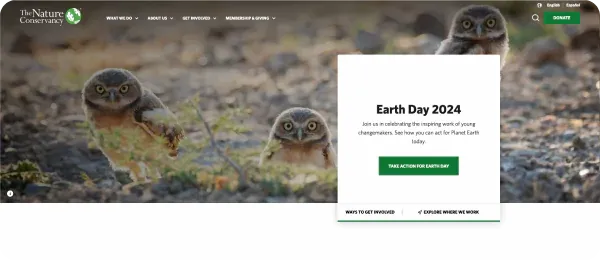
Lavender and Light Purple: Known for their calming effects, they're frequently found on websites in sectors such as wellness, beauty, and interior design.
Example: Aura Cacia
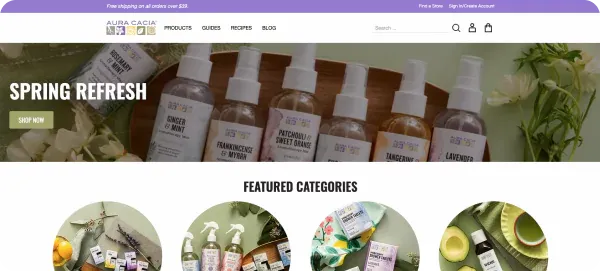
Websites with a Purple Color Palette to Inspire You
2- Energizing Colors
Red: Famous for its ability to boost energy, it can make hearts beat faster and create excitement. It's often seen on websites for games, restaurants, and entertainment to catch people's attention.
Example: Domino's Pizza

Modern red websites with awesome color schemes
Orange: This lively color brings enthusiasm and energy. It boosts activity and appetite, making it popular in gyms and restaurants. You'll often find it on websites for fitness centers and eateries.
Example: Orange theory

The best Orange websites of 2024
Bright Yellow: This cheerful color uplifts spirits and promotes alertness. It energizes individuals, inspiring action and enthusiasm. It's commonly found in schools, where it stimulates excitement for learning among students. Additionally, bright yellow is frequently utilized in various contexts including events, children's products, food and beverage industries, as well as health and wellness websites.
Example: Snap Chat
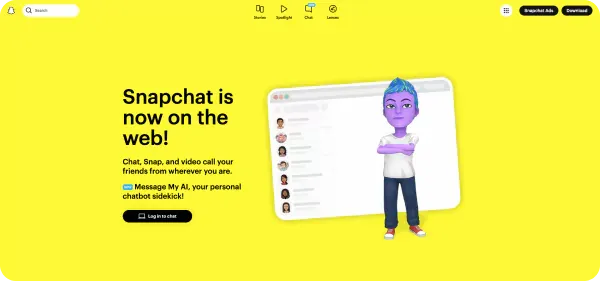
28 Stunning Yellow Websites With Color Schemes
3- Trust-Building Colors
Dark Blue: It's an all time favorite in corporate designs, dark blue conveys reliability, trust, and professionalism. It's a preferred color for financial institutions and technology companies.
Example: Facebook

22 Blue Company Logos from Famous Brands
Teal: It’s a mix of blue and green, teal combines the calming effect of blue with the subtle energy of green, conveying a sense of trust and openness. It's often used in branding and website design.
Example: Intercom

25 Beautiful Teal Colored Web Designs for Your Inspiration
Earth Tones (Brown, Beige): These colors are associated with stability and reliability. Used in branding, they can help create a grounded, trustworthy image.
Example: Patagonia

Brown Color Palettes for Exceptional Websites
Wrong Color in Branding and Marketing
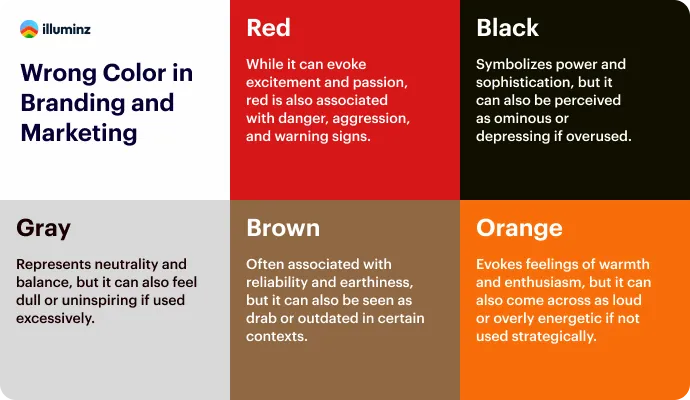
The Impact of Wrong Color Choices:
If you have chosen the wrong color then it can have a -ve effect on a company's image and success. It can lead to confusion among customers, inconsistency in brand identity, and a disconnect between the brand message and audience perception.
It's crucial for businesses to carefully select colors that align with their brand values, target audience, and overall marketing objectives to ensure a cohesive and impactful brand presence.
Conclusion:
You have seen how color psychology is utilized by both small and large brands to emotionally connect with users. It serves as a powerful tool to enhance brand recognition, evoke desired emotions, and influence consumer behavior. By understanding the psychology behind colors and making strategic choices, brands can establish a strong and impactful presence in the market. From logo design to marketing campaigns, colors play a crucial role in shaping a brand's identity and perception.
Frequently Asked Questions on Color Psychology
Ques: Can color psychology be used to increase sales and conversions?
Ans: Yes, color psychology can influence consumer purchasing decisions. For instance, using contrasting colors for call-to-action buttons can draw attention and increase click-through rates. Additionally, colors that evoke trust and security can encourage users to complete transactions.
Ques: Why is color consistency important in branding?
Ans: Consistent use of color helps build brand recognition and reinforces brand identity. It ensures that the brand’s message and personality are clearly communicated across all marketing channels and touchpoints.

